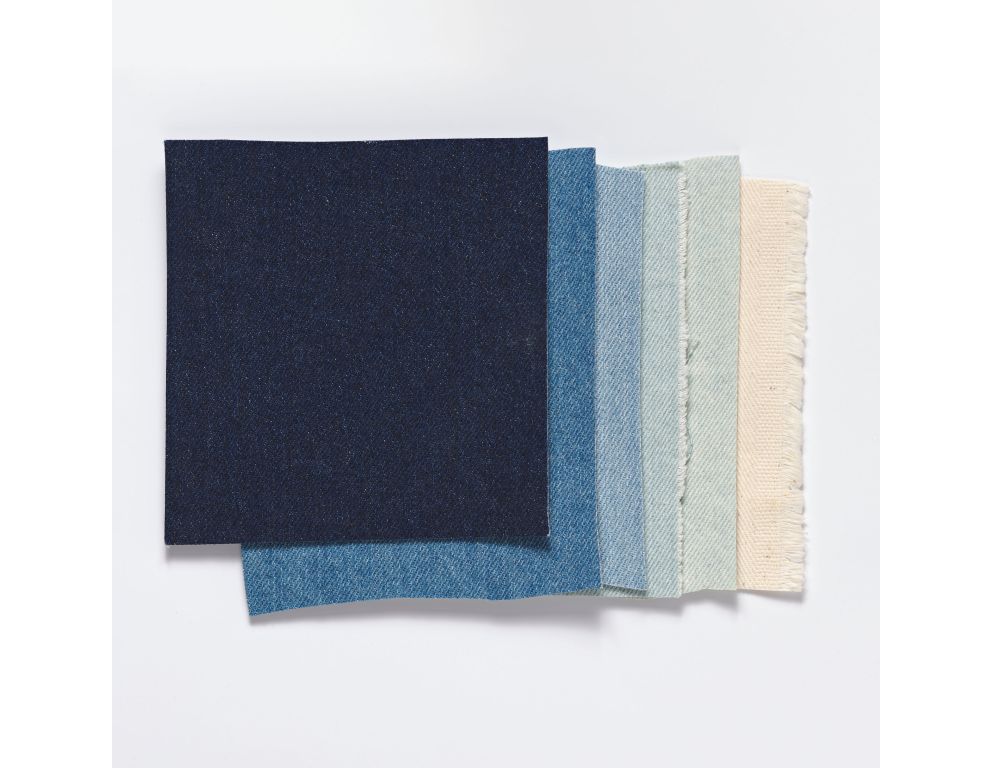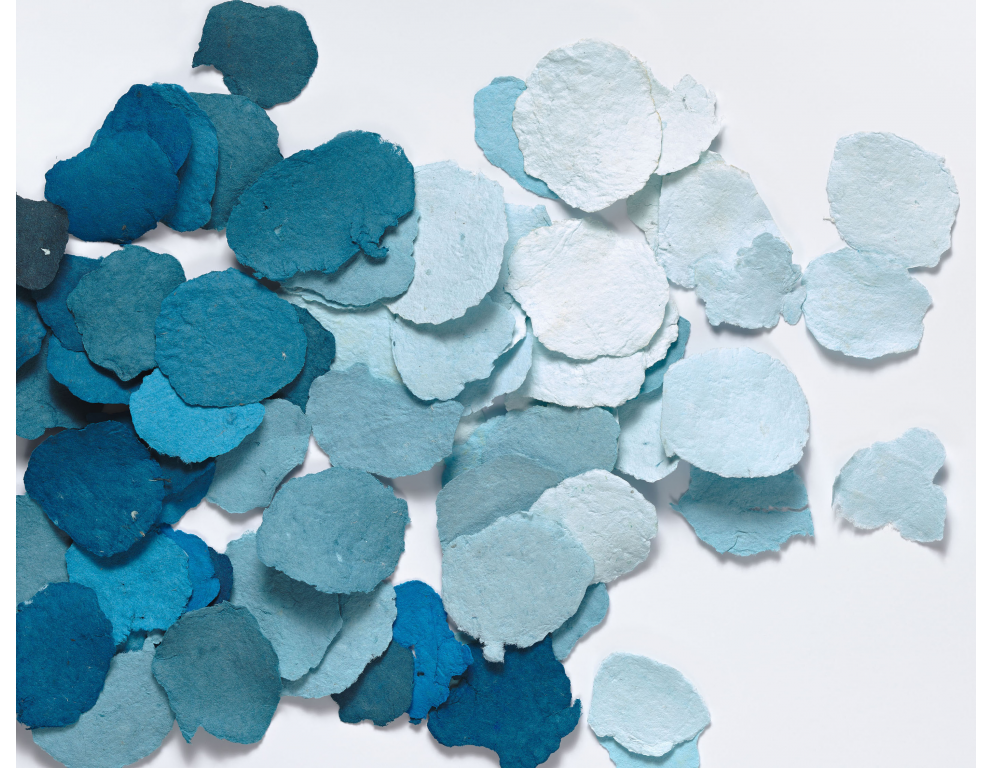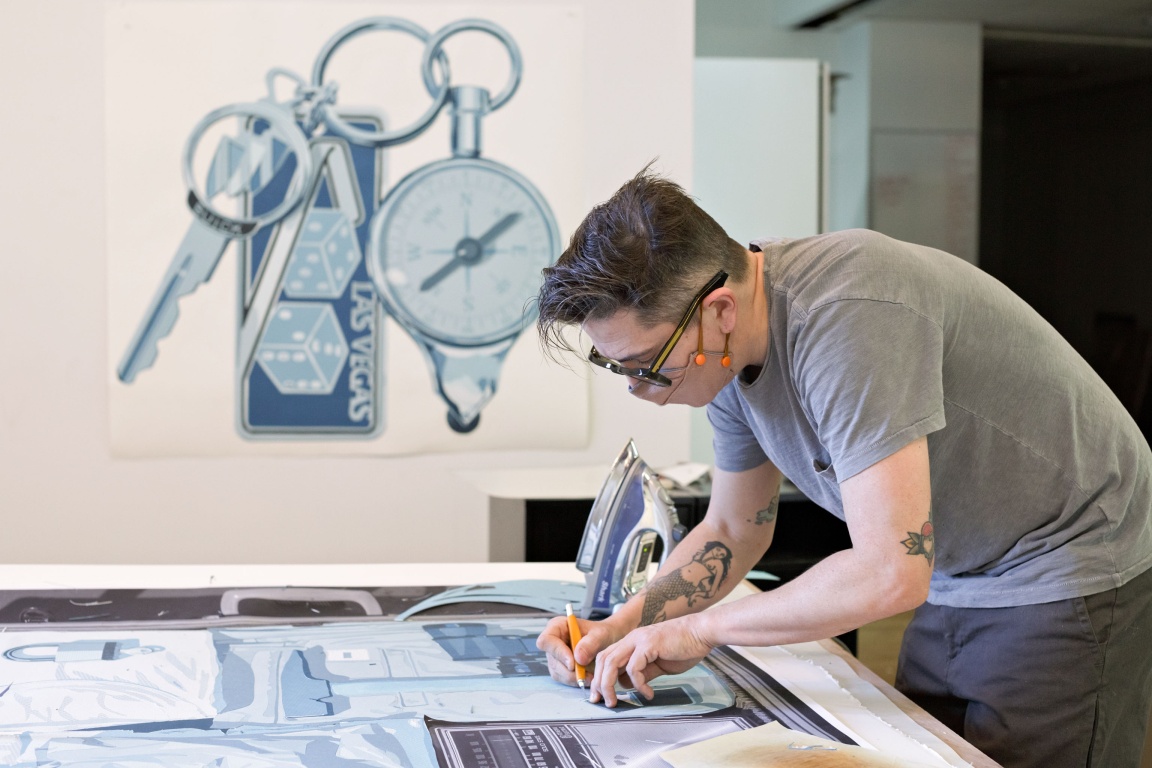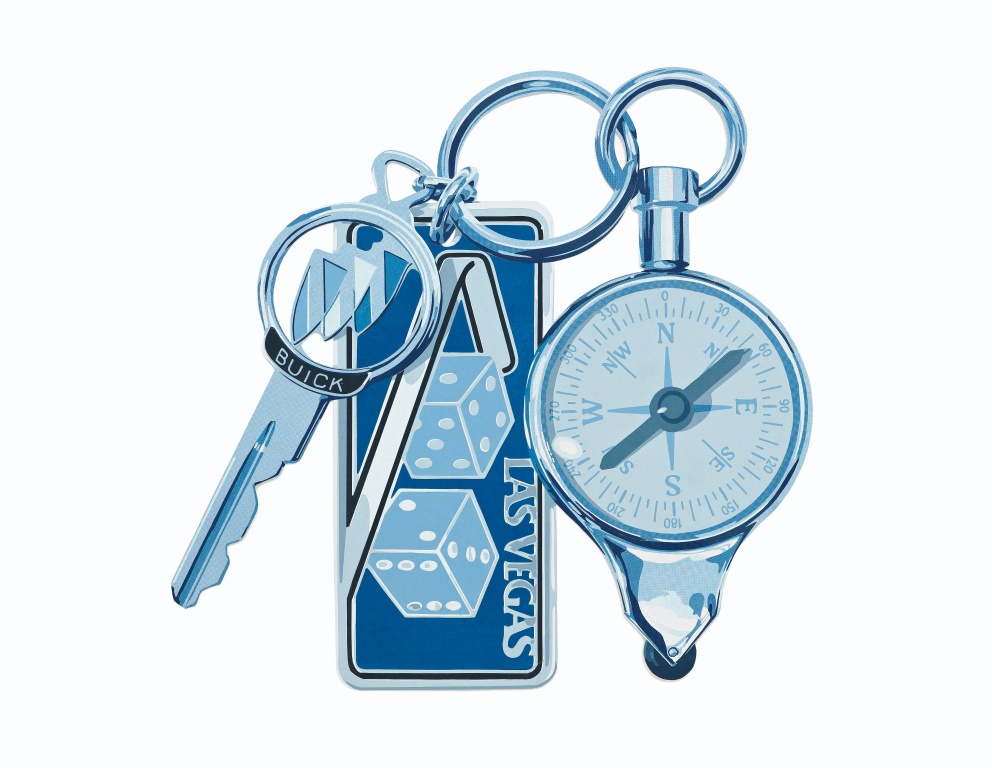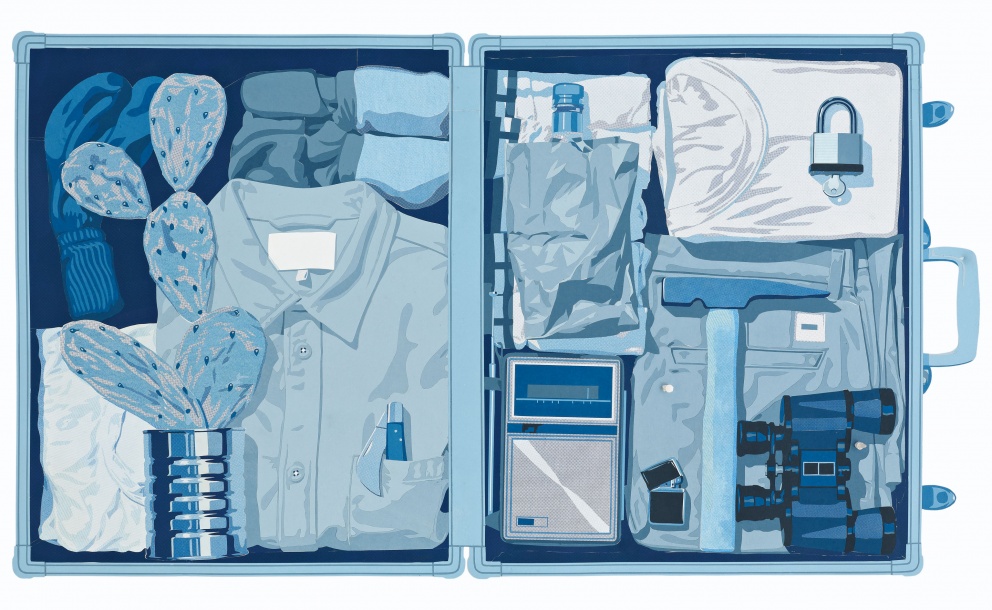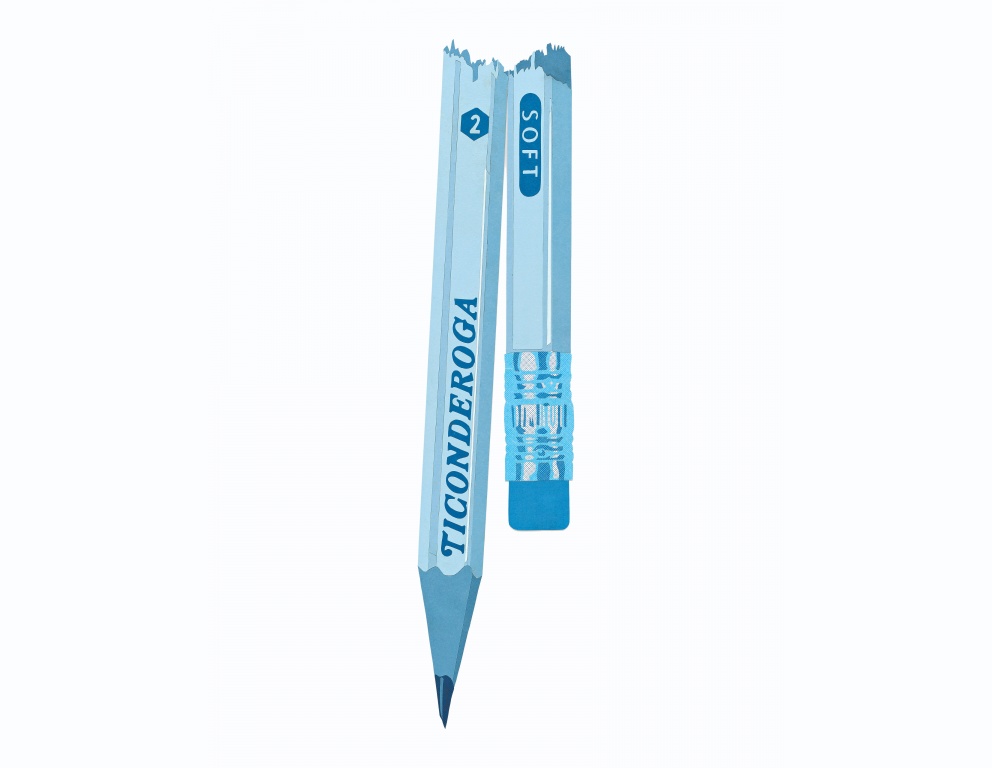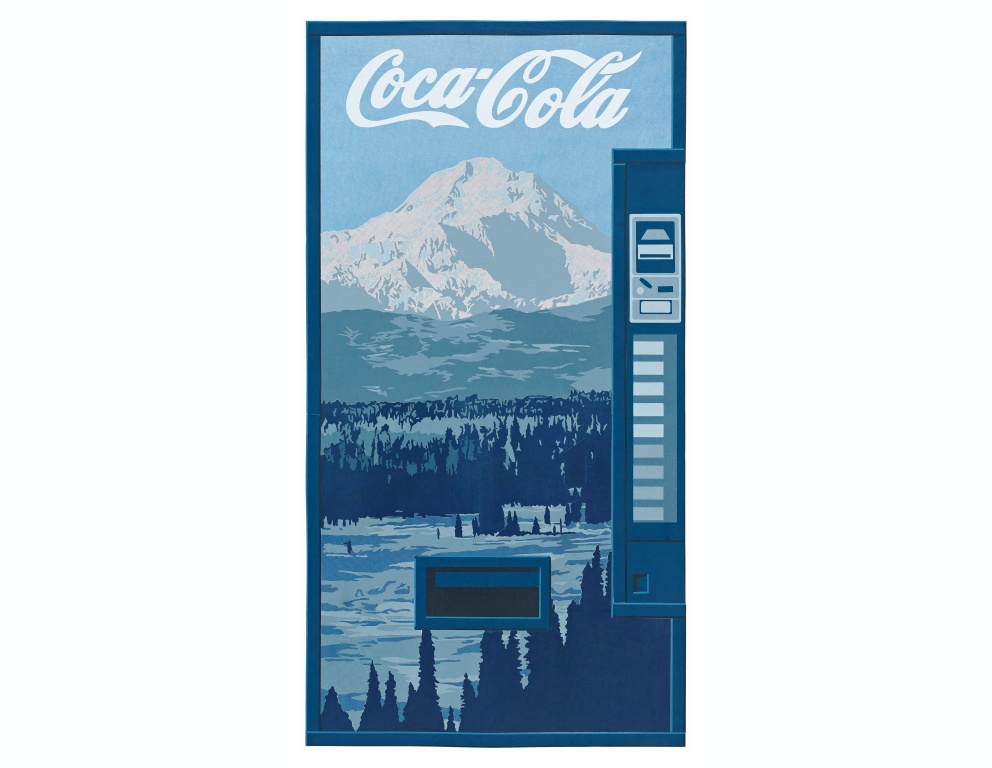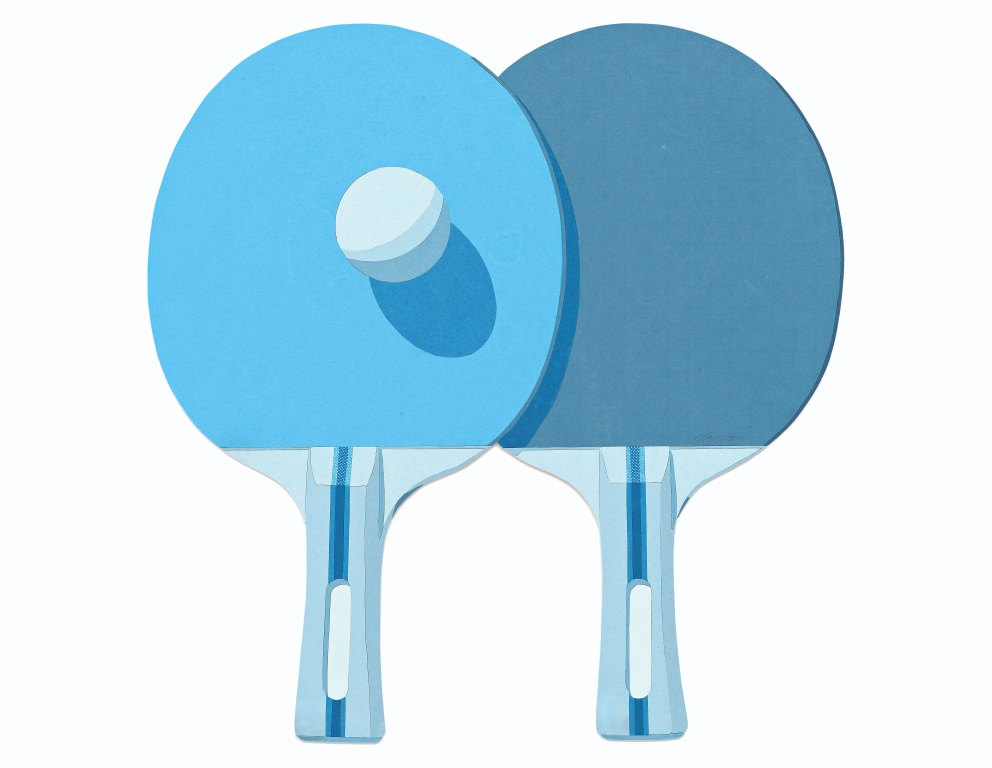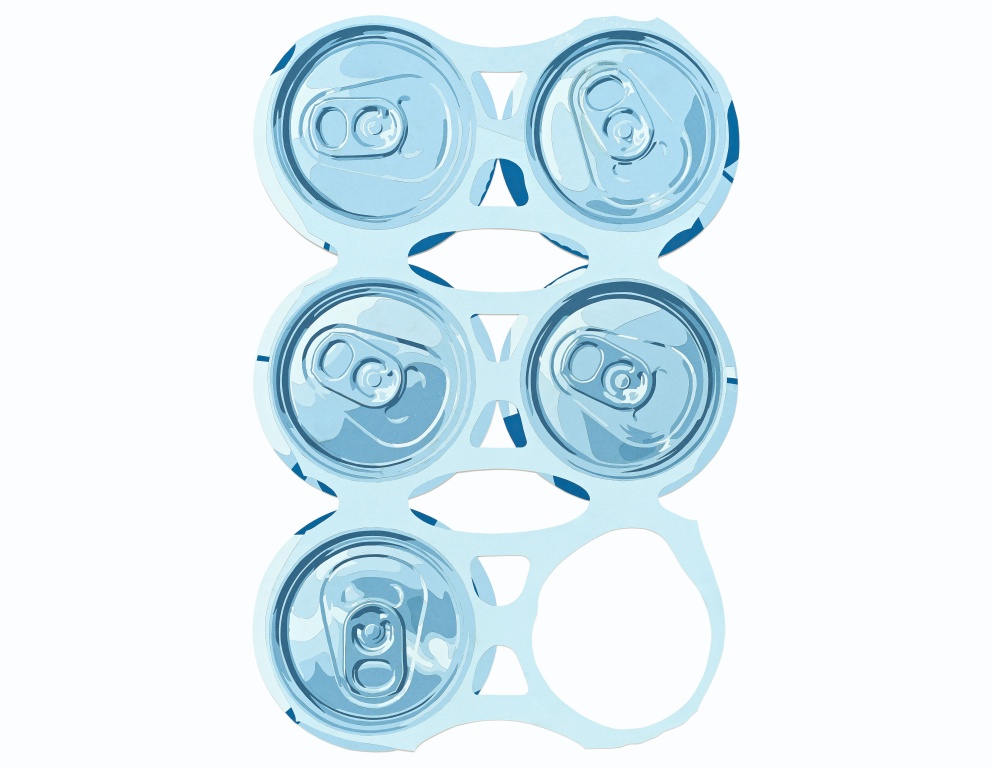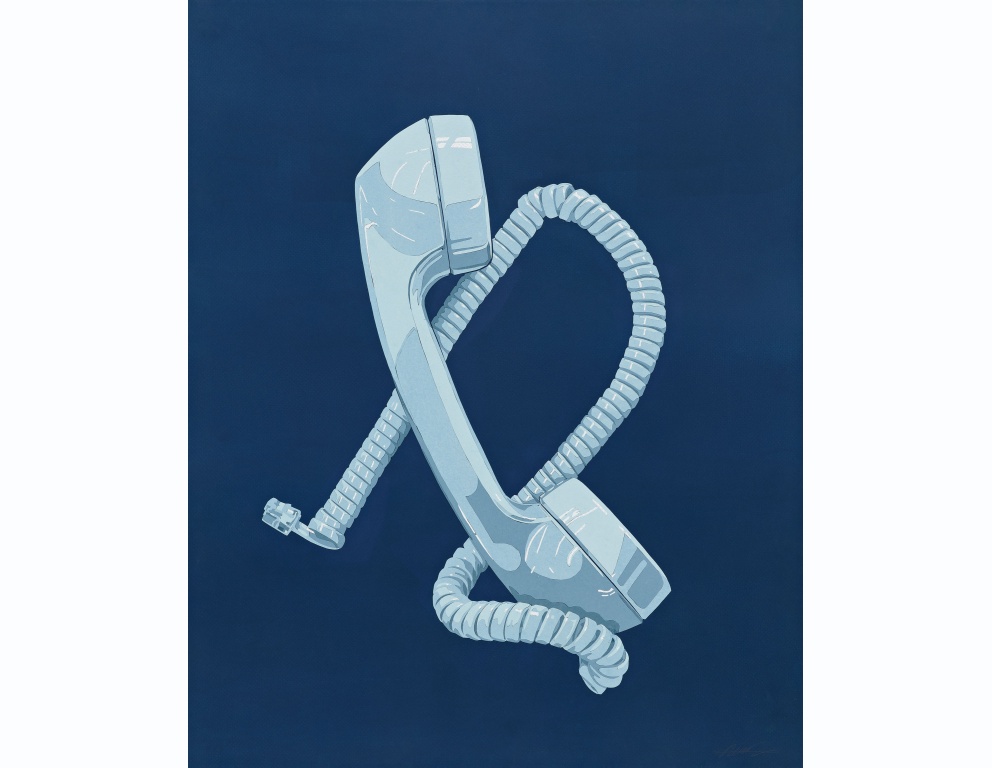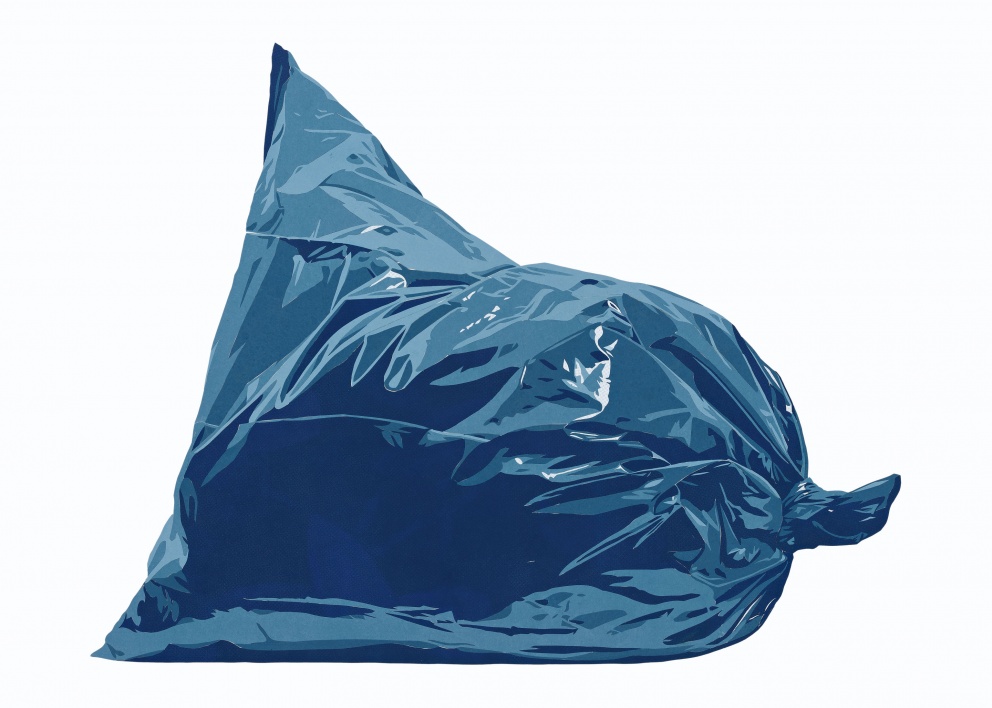Over the course of several weeks, the artist painstakingly hand-cut the contours of artifacts of Americana, collaging layer upon layer into larger-than-life representations, inflating commonplace objects on the scale of corporate advertising.
-
In early 2021, with a pandemic at its height and an election still being violently contested, artist Nick Doyle set up residency in the Pace Editions studios to create a body of work that would question American identity.
His sources were the commonplaces of soft patriotism—myths that, when left unquestioned, assume the currency of truth. Commonly deployed as casual nostalgia, in Doyle’s hands these symbols are revealed to be more pernicious, perpetuating the economies and power structures that first created them.
With a title appropriated from Katharine Lee Bates’ lyrics for the song America the Beautiful, the exhibition, Amber Waves of Grain, is Doyle’s direct response to the current emotional climate in America. Tracing back to the sources of this emotive thread, this body of work is an evidentiary exhibit of the interrelationship between hegemonic masculine supremacy, western capitalism, and the mythic ideals of American identity.
-
The conceptual and material fabric of Doyle’s work is denim, a cloth whose distinctively rugged weave and variegated surface instantly conjure the notion of America and, specifically, the American Man—industrious, stolid, capable.
To the artist, the material represents not the intrepid prospectors of the 1849 Gold Rush or the James Dean of 1955, whose smoldering performance in Rebel Without a Cause put blue jeans on a Hollywood screen. Doyle looks past the western and blue-collar affects of the garment, to a textile trade that flourished on the back of enslaved laborers who harvested cotton and indigo in the American South, industries whose profitability bolstered the institution of slavery.
“I use this material in order to render American iconography with this shame,” Doyle says. “Like casting a lens or a filter over them in order to portray a more accurate and contemporary American realism. Because to me, these American myths are not only fabrications, but they're poor responses to a great shame that we carry as a nation. And that we are a rather morally depressed nation as opposed to one that is truly healthy and great.”
-
“When I think about denim in relation to America, there are obvious cultural myths: blue collar heroes; rugged cowboys; counter-culture rebels. But then I think about how the first cash crop in American history was indigo, that the first blue jean was invented through the combination of indigo and cotton. And I wonder how denim could have become any symbol other than one of American slavery.”1
-
With Pace Editions’ papermakers and printmakers, Doyle undertook to recreate his palette of denims in handmade cotton paper. Pulped from second-cut cotton, the material derives from the short seed hairs of the plant that is left over when the longer fibers have been harvested for textiles. In the papermaking process, these cast-offs are born anew, forming permanent bonds to become thick, tactile sheets of paper.
-
-
In the spirit of Edward Hopper’s lonely spaces, inhabited by anonymous people, Doyle’s images are simultaneously ennobling and crushingly banal. Their corporate emblems make reference to the endless, elusive promises of America, while maintaining that they are nothing more than mirages leading ever further into a spiritual desert.
There is No True North evokes disillusion in its title, while the objects adorning a key ring dangle tantalizing images of freedom and good fortune on the open road.
-
The etymology of denim itself reveals a play on notions of authenticity and aspiration. While the term “blue jeans” is said to have originated from the sturdy blue cloth that Genoese weavers produced for sailors’ clothing, referred to by French traders as bleu de Gênes, their countrymen claimed that their own serge de Nîmes was a more durable fabric. The terms have become interchangeable and divorced from their sources, yet emblematic and iconic in the American context.
Likewise, in Doyle’s work, brand names such as Coca-Cola or Ticonderoga take on a mythic stature—one that the owners of these trademarks have spent over a century building up and that bears no proportion to the products they adorn. In his images of a broken pencil or a vending machine displaying an artificial landscape, Doyle points toward the hollowness of their claims to fame.
-
“I think consumer culture is born of a place of shame, a feeling that you need something in order to be complete. To me, it seems like desire born from not having, as opposed to a desire born out of genuine interest.”
-
Masculine archetypes are central to the American myth: the cowboy, the prospector, the farmer, the rebel—all proclaim the virtues of independence and self-sufficiency, while neglecting to account for the patriarchal and Eurocentric codes of behavior and property that enable them.
In playful responses to these themes, Doyle highlights the infantilization of the American man through works such as Unnecessary Games and Keeping an Even Keel that hint at the need to distract and pacify the male spirit through mindless leisure.
-
The monochrome palette of these works places them at a remove from contemporary life, as if they were recorded in black and white photographs from a previous century or encased in the glaciers of a future ice age. Drained of their expected colors they become memento mori of the age of American consumerism, signaling through their own obsolescence the inexorable decline of the culture that created them.
-
Notes
Citations:
Credits:
All works of art © Nick Doyle
All images courtesy of Pace Prints, except where noted.
All quotes provided by the artist, previously published in his video commentary to his 2020 exhibition at Stems Gallery.
